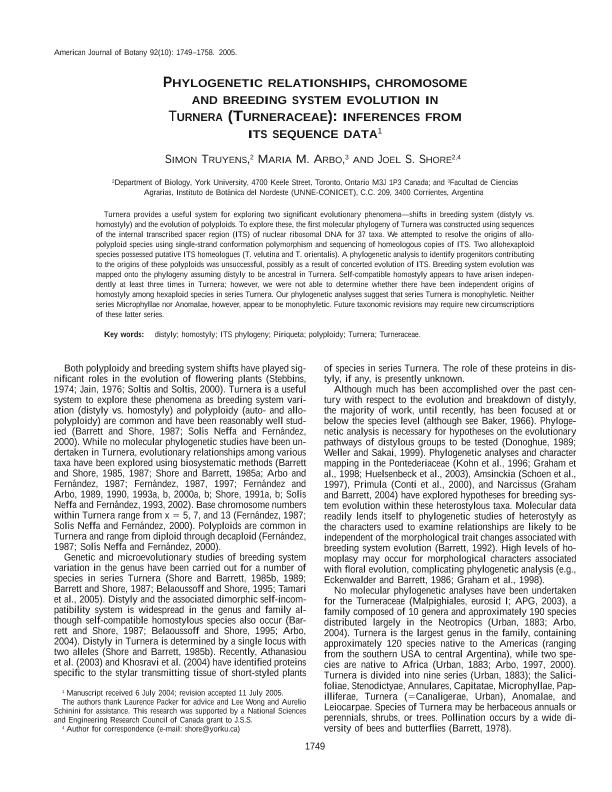Artículo
Phylogenetic relationships, chromosome and breeding system evolution in Turnera (Turneraceae): inferences from ITS sequence data
Fecha de publicación:
12/2005
Editorial:
Botanical Society of America
Revista:
American Journal of Botany
ISSN:
0002-9122
e-ISSN:
1537-2197
Idioma:
Inglés
Tipo de recurso:
Artículo publicado
Clasificación temática:
Resumen
urnera provides a useful system for exploring two significant evolutionary phenomena—shifts in breeding system (distyly vs. homostyly) and the evolution of polyploids. To explore these, the first molecular phylogeny of Turnera was constructed using sequences of the internal transcribed spacer region (ITS) of nuclear ribosomal DNA for 37 taxa. We attempted to resolve the origins of allopolyploid species using single-strand conformation polymorphism and sequencing of homeologous copies of ITS. Two allohexaploid species possessed putative ITS homeologues (T. velutina and T. orientalis). A phylogenetic analysis to identify progenitors contributing to the origins of these polyploids was unsuccessful, possibly as a result of concerted evolution of ITS. Breeding system evolution was mapped onto the phylogeny assuming distyly to be ancestral in Turnera. Self-compatible homostyly appears to have arisen independently at least three times in Turnera; however, we were not able to determine whether there have been independent origins of homostyly among hexaploid species in series Turnera. Our phylogenetic analyses suggest that series Turnera is monophyletic. Neither series Microphyllae nor Anomalae, however, appear to be monophyletic. Future taxonomic revisions may require new circumscriptions of these latter series.
Palabras clave:
Distyly
,
Homostyly
,
Its Phylogeny
,
Piriqueta
,
Polyploidy
,
Turnera
,
Turneraceae
Archivos asociados
Licencia
Identificadores
Colecciones
Articulos(IBONE)
Articulos de INST.DE BOTANICA DEL NORDESTE (I)
Articulos de INST.DE BOTANICA DEL NORDESTE (I)
Citación
Truyens, Simons; Arbo, Maria Mercedes; Shore, Joel S.; Phylogenetic relationships, chromosome and breeding system evolution in Turnera (Turneraceae): inferences from ITS sequence data; Botanical Society of America; American Journal of Botany; 92; 10; 12-2005; 1749-1758
Compartir
Altmétricas




